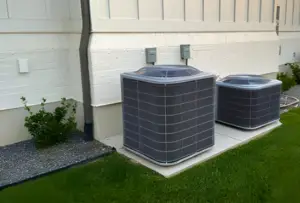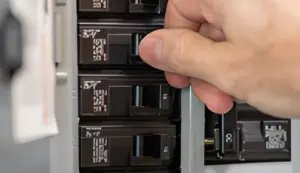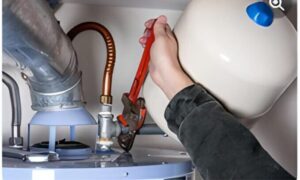As the temperatures drop and winter approaches, the reliability of your furnace becomes paramount. A malfunctioning furnace can quickly turn your cozy home into a chilly and uncomfortable space.
One crucial component that often goes unnoticed is the capacitor, which plays a vital role in the efficient functioning of your furnace. However, like any mechanical device, capacitors can deteriorate over time, leading to a host of problems.
But how do you know if your furnace capacitor is on its last legs? In this discussion, we will explore the warning signs of a faulty furnace capacitor and how to address them.
So, if you want to ensure the longevity and efficiency of your heating system, keep reading to discover the red flags that could indicate your furnace is doomed.
Signs of a Bad Furnace Capacitor
A bad furnace capacitor can manifest various warning signs that indicate potential issues with the blower motor and overall functionality of the unit.
One of the most apparent signs is the complete lack of power, where the blower motor fails to function and the furnace stops working entirely.
Additionally, a faulty capacitor can cause the blower motor to operate inconsistently, running slowly or overheating easily.
If the capacitor produces humming sounds, it may indicate electrical issues and should be inspected by professionals.
Another warning sign is when the blower motor fails to start within a few minutes after increasing the thermostat settings.
Lastly, if the blower motor works strangely or short cycles, it may be a sign of a bad capacitor.
Regular maintenance and consultation with HVAC professionals are recommended to address these issues promptly and ensure the proper functionality of the furnace.
How Often Capacitors Should Be Replaced
Capacitors on furnaces are commonly replaced components that typically provide 10-20 years of service, but their lifespan can be affected by various factors.
It is important to understand when capacitors should be replaced in order to ensure the optimal performance of your furnace. Generally, if your furnace is over 10 years old, it is likely that you'll need to replace the capacitor at least once.
Regular maintenance can help extend the lifespan of the capacitor. Factors such as prolonged heat exposure, choosing a capacitor with incorrect voltage ratings, improper installation, and sizing can all decrease the lifespan of the capacitor.
To ensure proper replacement and inspection of the capacitor, it is recommended to consult HVAC professionals who have the necessary expertise to handle the job.
Testing the Furnace Capacitor
To properly test the furnace capacitor, it is essential to follow a series of steps to ensure accurate results and determine if replacement is necessary.
Start by shutting off the power to the unit at the fuse.
Then, remove the housing of the blower motor to access the capacitor.
It is important to discharge the capacitor following the manufacturer's instructions to avoid electrical shocks.
Once discharged, use a voltmeter set to the X1 setting to check the voltage of the capacitor.
Compare the measured voltage to the rating specified by the manufacturer.
If the voltage does not match, it indicates a faulty capacitor and it needs to be replaced.
Testing the furnace capacitor is a crucial step in diagnosing potential issues and maintaining the efficient operation of the furnace system.
Factors Affecting Capacitor Lifespan
Factors that can significantly affect the lifespan of a furnace capacitor include:
- Prolonged heat exposure: This can cause the capacitor to overheat and degrade over time. It is important to place the furnace in a shaded area to minimize heat exposure.
- Choosing a capacitor with incorrect voltage ratings: This can result in system failure and shorten the lifespan of the capacitor. It is crucial to select a capacitor with the correct voltage ratings to ensure proper functioning.
- Improper installation and sizing: This can lead to premature failure of the capacitor. If the capacitor is not installed or sized correctly, it may not be able to handle the electrical load properly, causing it to fail early.
- Lack of regular maintenance: Regular maintenance is crucial in maximizing the lifespan of the capacitor. Cleaning the capacitor and ensuring proper connections can help prevent damage and extend its lifespan.
It is recommended to consult experienced HVAC professionals for proper installation and maintenance to avoid further damage to the capacitor.
Your Go-To Professionals for Heating System Repair in San Diego
Action Air Conditioning, Heating & Solar is a reputable and trusted company in San Diego County that specializes in providing reliable and efficient heating system repair services.
With a team of experienced professionals and NATE-certified technicians, they are equipped to resolve any HVAC system issues efficiently.
Whether it is repair, maintenance, or installation, Action Air Conditioning, Heating & Solar is committed to meeting customer needs and ensuring optimal comfort and safety.
They understand the importance of a properly functioning heating system, especially during the colder months.
By relying on their expertise, customers can have peace of mind knowing that their heating system is in good hands.
For reliable HVAC services in San Diego County, contact Action Air Conditioning, Heating & Solar at (760) 437-1699.
Frequently Asked Questions
Can I Replace the Furnace Capacitor Myself?
Replacing a furnace capacitor requires technical knowledge and expertise. It is recommended to consult HVAC professionals for proper replacement and inspection to prevent further damage and ensure the optimal functioning of your heating system.
How Much Does It Cost to Replace a Furnace Capacitor?
The cost of replacing a furnace capacitor can vary depending on factors such as the brand, size, and location. It is recommended to consult an HVAC professional for an accurate estimate and to ensure proper installation.
Are There Any DIY Methods to Extend the Lifespan of a Furnace Capacitor?
There are no DIY methods to extend the lifespan of a furnace capacitor. It is best to rely on regular maintenance and professional HVAC technicians for installation and proper replacement to maximize the capacitor's lifespan.
How Long Does It Take to Replace a Furnace Capacitor?
The time it takes to replace a furnace capacitor can vary depending on the specific furnace model and the expertise of the technician. It typically takes around 30 minutes to an hour to complete the replacement.
What Are the Consequences of Not Replacing a Faulty Furnace Capacitor?
Not replacing a faulty furnace capacitor can result in the blower motor not functioning properly, leading to the unit not working at all. It can also cause inconsistent motor operation, overheating, electrical issues, and ultimately system failure.
Conclusion
In conclusion, recognizing the warning signs of a bad furnace capacitor is crucial for homeowners to ensure the longevity and efficiency of their heating systems. Regular maintenance and professional installation are key factors in extending the lifespan of a capacitor.
By being proactive and addressing any issues with the capacitor promptly, homeowners can avoid discomfort and inconvenience caused by a malfunctioning furnace. Trusting a reliable HVAC service provider, such as Action Air Conditioning, Heating & Solar, can help homeowners with expert repair, maintenance, and installation solutions for their heating systems.







